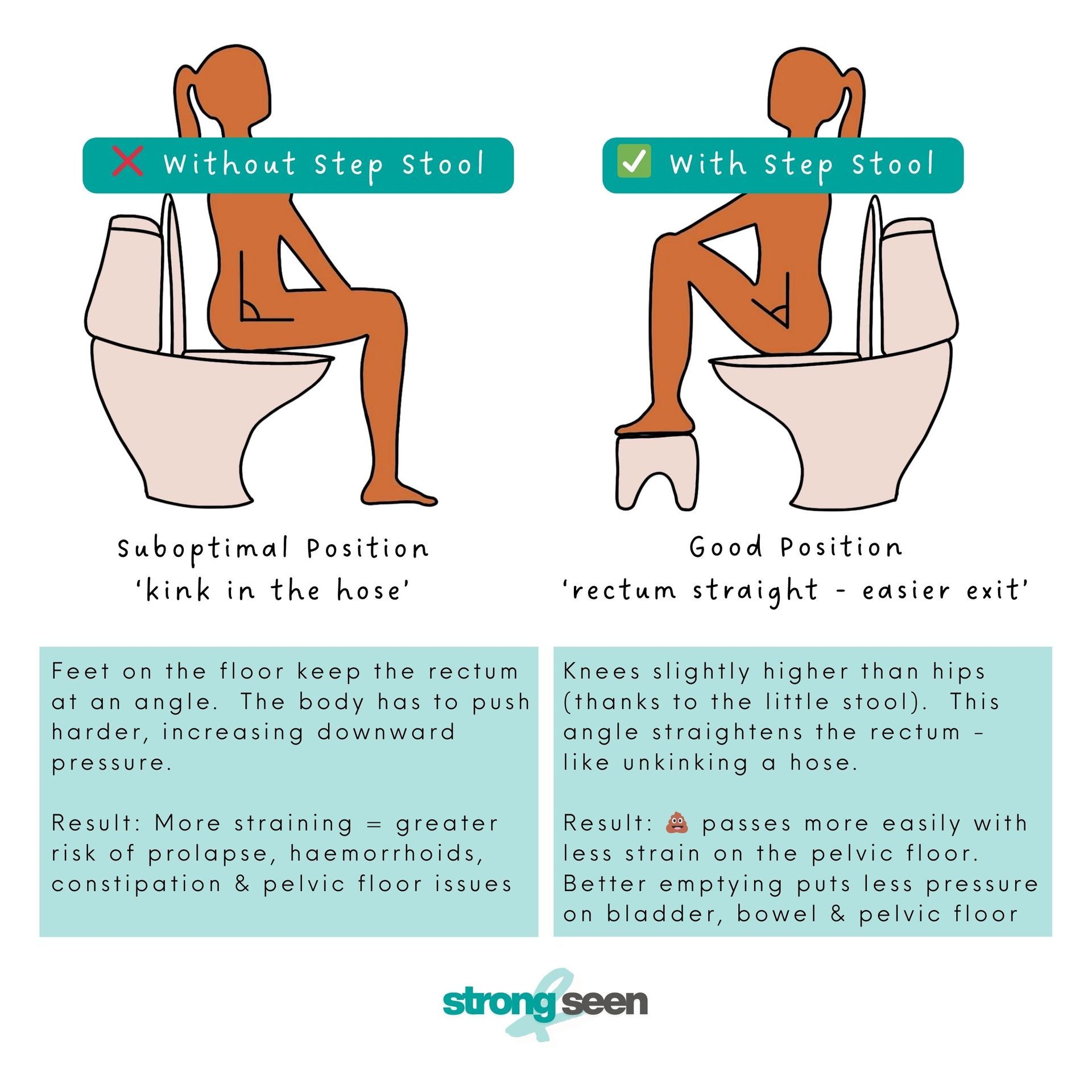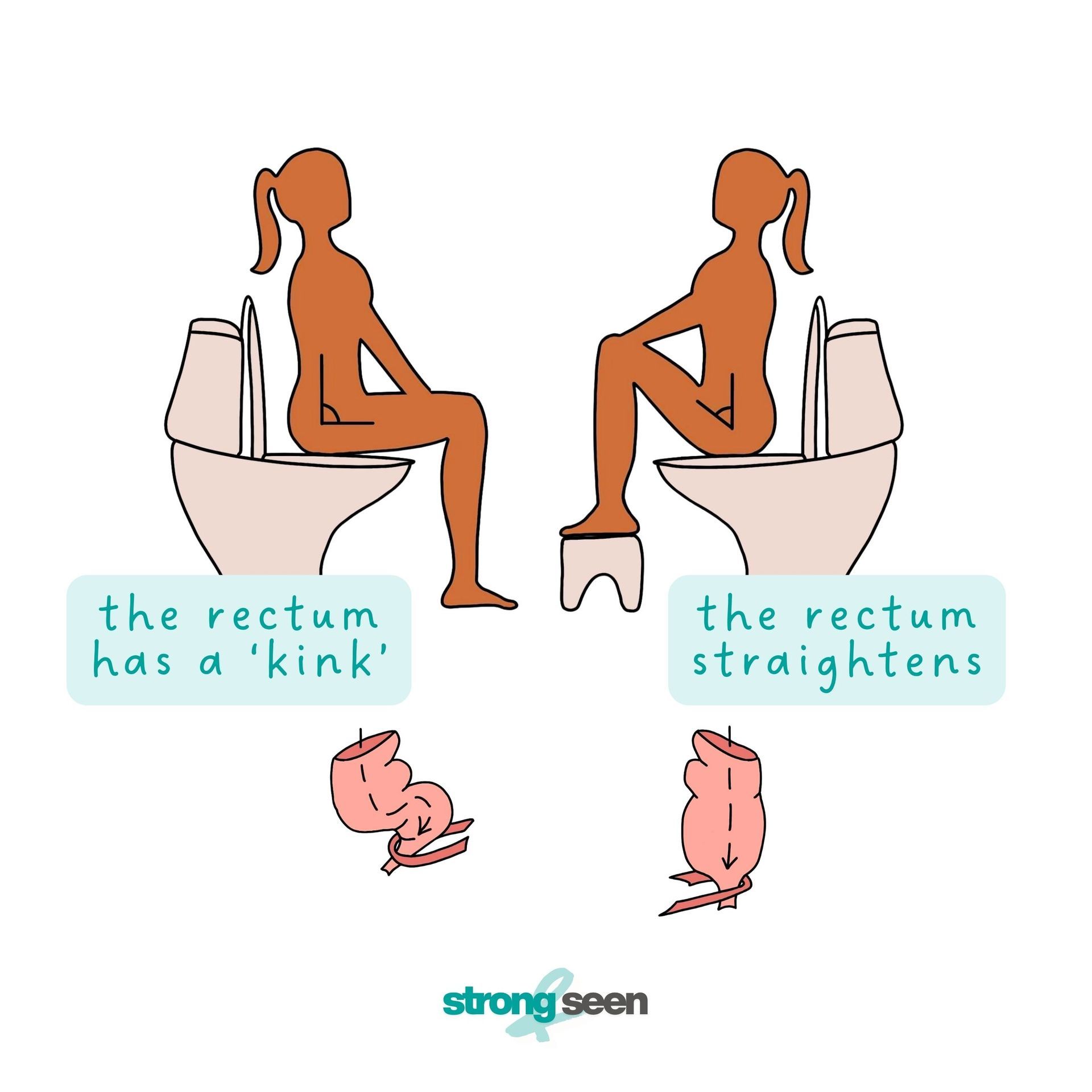LIVE: Poo better, feel better
💩 How to Poo Properly (Yes, We’re Going There )
I never thought I’d be writing a blog post about pooing - but here we are. And honestly? It’s one of the most important conversations in women’s health (and other health conversations too!).
Why? Because so many women believe prolapse or leakage only happen after pregnancy or vaginal birth. But in reality, straining on the toilet is one of the biggest culprits. Constipation, poor toilet posture, and ignoring the urge can all put unnecessary pressure on the pelvic floor.
🚽 Why Toilet Position Matter s
Your rectum isn’t a straight tube, but it’s got a natural bend (the anorectal angle).
• When you sit with your feet flat on the floor, that bend stays kinked. To empty, you have to push harder, increasing pressure on the pelvic floor.
• When you sit with your knees slightly higher than your hips (using a step stool or “squatty potty”), that bend straightens out - like unkinking a hose. Suddenly everything flows more easily, with far less strain.
Small change. Big difference.
🌾 My Secret Ingredient: Konsyl D/Metamucil/Psyllium husk (different names, same ingredient/concept)
Position is one part of the puzzle, but poo itself matters.
Poo should be soft, well-formed, and easy to pass; not little rabbit pellets or a rock-hard log. That’s where Konsyl D, a natural fibre bulking agent, can make a huge difference. It helps create softer, bulkier stools that move more easily through the bowel.
Think of it as giving your body the right raw material to work with ie the position + the consistency together = smooth sailing.
🌀 Constipation & The Menstrual Cycl e
If you’ve ever noticed constipation right before your period, you’re not imagining it. Progesterone rises in the luteal phase (the second half of your cycle) and slows down gut movement. The result? Everything backs up.
Here’s what can help during that pre-period slow-down:
• Hydrate with electrolytes (not just plain water) to keep things moving.
• Increase fibre: especially with gentle bulking agents like Konsyl D.
• Use your step stool: every time - position makes a difference.
• Know it will pass: literally. The slowdown is hormonal, and once your bleed starts, things usually move again.
Understanding this pattern can save a lot of stress and worry and helps you manage your cycle with fewer surprises.
🧠 Why Constipation Gets Trick y
When poo sits too long in the rectum, it dries out. A big, hard mass distends the rectum and stretches the nerves that normally tell you to go. The longer it stays there, the weaker the signal becomes, so you don’t feel the urge as strongly. That makes it even harder to pass, creating a vicious cycle of constipation, straining, and pelvic floor stress.
🚩 When to See Your G P
Here’s the most important part: never just assume constipation or straining is “normal.” Any change in your bowels deserves a conversation with your GP.
Absolute red flags include:
• Blood in your stool (or mucous)
• Unexplained weight loss
• Persistent abdominal pain
• Sudden, ongoing change in bowel habits which means diarrhoea/looser stools or constipation (and a red flag fave of mine is including pooping in the middle of the night – this is not normal!)
• Feeling like you can’t empty properly despite trying (tenesmus)
These symptoms need proper assessment so don’t ignore them.
✨ Final Thought
It sounds simple, but learning how to poo properly can prevent years of discomfort, protect your pelvic floor, and even reduce the risk of prolapse and leakage.
👉 So, sit with your knees up. Bulk your stool with fibre like Konsyl D. Hydrate, especially around your period. Don’t ignore the urge.
And most importantly, if something changes - talk to your GP.
Because better pooing really does mean better living.






